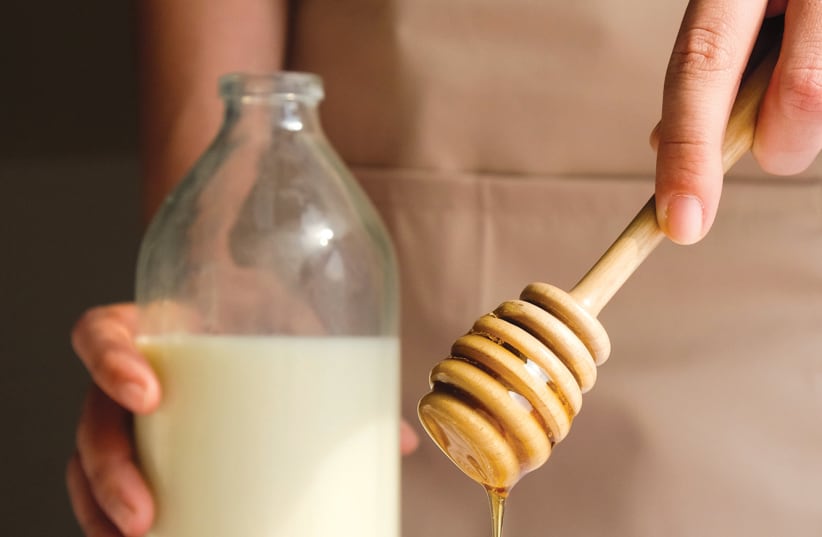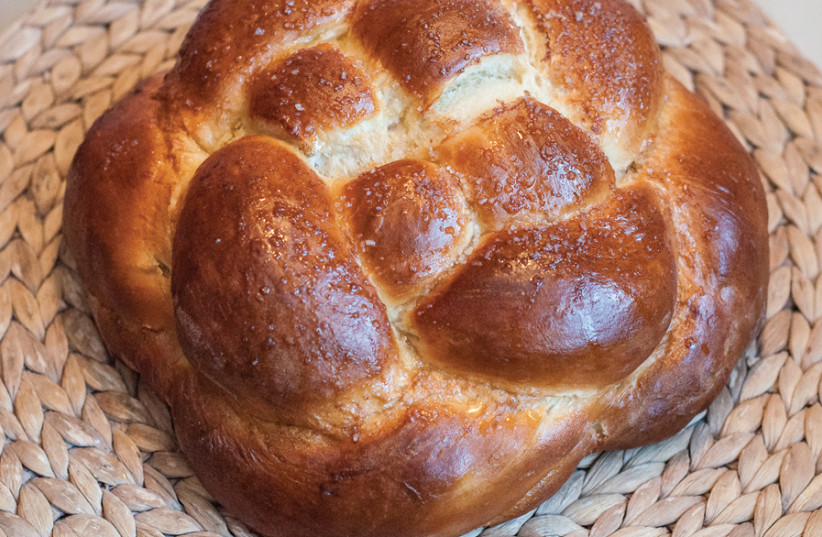Each Jewish festival has its own traditional food. On Rosh Hashanah, you eat round challot. On Sukkot, you eat diluted soup (if it is raining in the sukkah). On Passover, you eat matzot. On Shavuot, you eat cheesecake.
In this respect, Shavuot is an “oddball” festival. By contrast with Shabbat and all the other festivals where meat is the mainstay (the tradition of celebrating on a Jewish festival means eating meat, according to the sources), Shavuot is specifically dairy.
Perhaps the derivation of this custom is from the verse in the Bible that refers to Israel as the “land flowing with milk and honey.” Milk and honey? Wouldn’t it have been better if Israel had been the land of T-bone steaks and sushi? How much milk and honey can one eat already?
In all likelihood, the Bible was not referring to the staple food but rather to the opposite ends of the spectrum – the young and the old. As we know, those who benefit most from milk are children, and those who most enjoy honey are older people. In fact, switching them around – giving honey to a child or milk to an old person – can often be harmful. Perhaps the Bible is hinting that Israel is overflowing with food – for the young and the old and everyone in between. However, that does not explain the special connection between milk and Shavuot.
There are many reasons given for this linkage, but I am not going to spend the rest of the article telling you about them, as you can easily look them up on the Internet. I will give you one clue, however – it is not a conspiracy of the dairy companies to make a fast buck!
Instead, I would like to devote this article to the subject of baking bread with milk (and honey/sugar). Under normal circumstances, making bread dairy for a Jewish meal is frowned upon because someone may forget and eat it together with meat, which is prohibited by the kosher laws. Shavuot, however, affords us a unique opportunity to bake bread with milk and enjoy one of the most “famous” breads the rest of the nations of the world enjoy year-round.
Everyone knows which bread I am referring to – Marie Antoinette immortalized it when she said “If they don’t have bread, let them eat… ” No, she did not say “cake.” Remember, Marie was French (actually she was Austrian, but she was living in France at the time). What she said (in French) was “Qu’ils mangent de la brioche.”
What is brioche?
WHAT IS brioche? It is not cake; it is a kind of bread, a rich man’s bread, since it is made with more expensive ingredients than regular bread, such as eggs, oil/butter, milk! And sugar. Unlike cake, which is not made with yeast, brioche is made with yeast, which therefore classifies it as bread, not cake. But you get the idea. If the poor Frenchmen could not afford simple bread, they certainly could not afford expensive ingredients like eggs, sugar, milk and oil. It was probably not the only instance, but it was perhaps the most famous instance when someone went “head over heels” over bread (literally).
Most Jews are familiar with brioche because we have a bread that is very similar – challah. Challah is basically brioche without the milk (like focaccia is pizza without the cheese). Challah tastes good, but wait until you taste brioche. The milk and butter add just a tad more complexity of flavor and crumbly texture, giving it a slight edge, culinarily speaking, over regular challah. As such, it is the perfect festive Shavuot bread.
Let’s all enjoy brioche at our festive meals this Shavuot. It’s not in memory of Marie Antoinette (the French/Austrians probably copied it from us, anyway) but rather a celebration of the Land of Israel, a land of milk and honey.
A happy and peaceful Shavuot. ❖
The writer, a master baker originally from Johannesburg, South Africa, lives in Karnei Shomron with his wife Sheryl and four children. He is CEO of the Saidel Jewish Baking Center (www.jewishbakingcenter.com), which specializes in baking and teaching how to bake healthy, traditional Jewish bread. He also manages the Showbread Institute (www.showbreadinstitute.org), which researches the biblical showbread.
Brioche Challah
The grated cheese is not an original brioche ingredient. I add it at the end for extra flavor and to “mark” it so it is unmistakably dairy.
- 2½ cups flour
- 2 Tbsp. milk
- 4 large eggs
- 200 gr. butter, softened
- 2 tsp. instant dried yeast
- 1½ tsp. salt
- 4 Tbsp. sugar
Mix all ingredients in a bowl and knead for 10 minutes by hand (or seven minutes in the mixer). Leave to rise for 90 minutes or until doubled in volume. Punch down. Braid into a challah on baking tray. Baste with egg wash (50:50 ratio egg to water) and leave to rise again for 90 minutes. Bake for 20-25 minutes at 180 degrees C. or until brown in color. As you remove it from the oven, while still hot, sprinkle grated cheese of your choice over the top of the challah.

